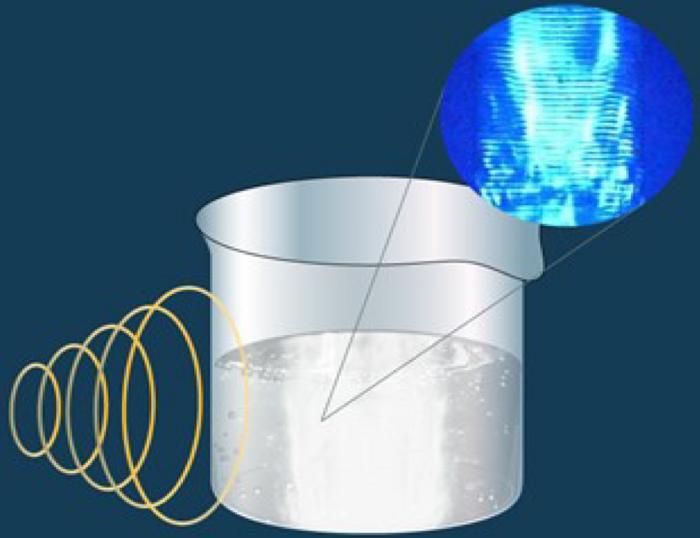
Unlocking the Secrets of Microbubbles: A Breakthrough in Ultrasonic Technology
The fascinating world of microbubbles is opening doors to revolutionary advancements across various scientific fields, including environmental remediation and medical applications. Microbubbles, which are tiny gas-filled cavities in liquids, have garnered attention for their unique properties and potential applications. Recent research led by a team from Osaka Metropolitan University highlights how these microbubbles can be generated through sonication—a process that exposes liquids to high-intensity ultrasonic waves. This exposure results in significant heat and pressure, creating microbubbles with remarkable characteristics.
At the heart of microbubble technology lies sonication, which drives cavitation phenomena in liquids. When ultrasonic waves are introduced, they create high-frequency pressure variations. These pressure differences lead to the formation and collapse of microbubbles, producing intense localized heating upwards of several thousand degrees Celsius in their interiors. This phenomenon allows for extraordinary reactions within the liquid medium, transforming the landscape of chemical processes and potentially improving existing techniques in water purification and material synthesis.
Osaka Metropolitan University’s research team, led by Professor Kenji Okitsu, has been investigating the chemical activity and thermal characteristics of these active bubbles. Their findings shed light on the variables that influence microbubble behavior, emphasizing that the generation of hydrogen gas serves as a more significant indicator of chemical activity than previously recognized markers such as hydrogen peroxide. This discovery is crucial for tailoring chemical reactions that depend on the enhanced reactivity of microbubbles during cavitation events.
The implications of this research are significant, especially in water treatment technologies. Traditional methods for purifying water often involve complex chemical processes and expensive filtration systems. However, the potential for using active bubbles to enhance these purification processes is enormous. When subjected to sonication, water can undergo selective degradation of pollutants, removing harmful substances from the environment efficiently and economically.
In their experiments, the research team explored the effects of varying parameters, such as solution temperature and the concentration of inorganic salts, on acoustic bubble activity. Remarkably, they observed that increased temperature and salt concentration resulted in a reduction of both the temperature of the active bubbles and the number of bubbles produced. Understanding these correlations is essential for developing practical applications of microbubble technology, as controlling these variables can yield optimum results for specific environmental and medical applications.
With an eye towards future applications, Professor Okitsu remarked on the clarity these findings bring to the characteristics of microbubbles. As researchers gain insight into the thermal and chemical dynamics within these bubbles, the control over chemical reactions is expected to become more precise. This enhanced understanding paves the way for advancements not only in water purification but also in nanotechnology initiatives where highly specialized materials can be synthesized.
The significance of microbubbles extends into the realm of medical science. For instance, in drug delivery, microbubbles can be employed as vehicles to transport pharmaceuticals directly to targeted areas, enhancing treatment efficacy while minimizing side effects. The heat generated during ultrasound exposure may also enhance the permeability of cell membranes, facilitating the entrance of therapeutic agents into cells with precision.
As the researchers continue to refine their understanding of microbubble dynamics, the potential applications seem almost limitless. From energy-efficient pollutant degradation methods to their utilization in the targeted delivery of medicines, the advancements in microbial technology could reshape numerous fields significantly. Furthermore, the emergence of new materials and compounds can stem from the controlled synthesis processes enabled by microbubbles.
The culmination of this research was published in the journal Ultrasonics Sonochemistry, where they presented their detailed findings. The groundbreaking nature of their work not only highlights the importance of cavitation and sonication but also provides a blueprint for future inquiries into the utilization of microbubbles. Ongoing investigations and technological development will be essential in harnessing the full potential of this emerging science, filling in the gaps between theoretical understanding and practical application.
As the scientific community continues to unveil the nuances of microbubbles, researchers remain optimistic about the future of this technology. With each study, the intricate dance of bubbles and the waves that create them becomes clearer, revealing endless possibilities for innovation. The coming years will likely bring even more astounding revelations, as microbubble research intertwines with other disciplines, fostering collaboration and expansion towards previously unimagined horizons. This exploration not only underscores the power of fundamental scientific principles but also demonstrates the profound impact of research in addressing global challenges in healthcare and environmental sustainability.
Subject of Research: Not applicable
Article Title: Evaluation of H2O2, H2, and bubble temperature in the sonolysis of water and aqueous t-butanol solution under Ar: Effects of solution temperatures and inorganic additives of NaCl and KI
News Publication Date: 7-Nov-2024
Web References:
References:
Image Credits: Credit: Osaka Metropolitan University
Keywords





